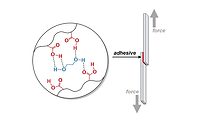Making Solid Connections with Swelling Fluids
Engineered silicone swelling fluid offers a safe and effective option for attaching silicone tubing.

Surgical Introducers
Swelling fluids are most commonly used by companies that specialize in designing and building complex medical devices including venous access devices, drainage catheters, dialysis machines, infusion pumps, oxygen masks, enteral feeding devices, and other devices that use hoses or tubes to transfer fluids, medications, gases, guide wires, cameras, or other materials.
Some of the more sophisticated devices feature state-of-the-art, multi-lumen tubing where multiple channels run inside a single tube, simplifying the devices’ operation. They often have smaller diameter and thinner-walled conduits, making them lighter and more flexible for easier handling, storing, and use.
Attaching Silicone Tubing
For some medical device fabricators, the preferred tubing material for their devices is medical-grade silicone. Although silicone has poor tear strength, it is bio-compatible, durable, flexible, and versatile for manufacturing. It also resists bacterial growth and is easy to sterilize. Joining complex silicone tubing onto parts made of harder materials can be difficult. First, although silicone tubing is flexible like a rubber band, it does not stretch or expand like a rubber band without mechanical or chemical help. Second, silicone has a high coefficient of friction, or a tacky surface, that makes sliding a soft silicone tube onto a rigid or barbed fitting tough.
Manually pushing or twisting the tubes into place is hard for assemblers, sometimes contributing to carpal tunnel syndrome, repetitive-task wrist problems, and other workplace-related injuries. Also, forcibly pressing small silicone tubing onto a rigid, pointed fitting sometimes results in stress-cracked tubes and ultimately scrapped materials.
Fortunately, there are swelling fluids to make connecting fittings onto tubes quicker and easier. Swelling temporarily increases the size of tubing or hose ends, making it easier to connect them to the fixtures and other components. Oil, alcohol, hexane, and engineered swelling agents are the four most common types of swelling fluids.
Silicone Oil
Silicone oil is a familiar medium to engineers and is intuitive because using silicone fluid to join silicone ensures the materials’ compatibility. Silicone oil makes tube attachment easier, but it is messy. Silicone oil easily migrates to other surfaces, so if a manufacturer only wants to coat a specific portion of the device, it is harder to contain the oil during coating. This can make the coating and joining process time consuming and costly because there is more cleanup required once the part is joined. The silicone oil can also easily migrate from the parts and into the production facility, coating other equipment and surfaces. It captures and spreads surrounding dirt in the process, making facility hygiene a constant challenge.
IPA (Isopropyl Alcohol)
Ultra-pure IPA (isopropyl alcohol) is readily available and is relatively inexpensive. By lubricating the end of the tube with enough IPA, the tube can slide over the fitting. But IPA dries slowly, which increases assembly cycle time, costing the manufacturer both time and money. Also, IPA can cause thin-wall tubing with less structural rigidity to collapse or fold over onto itself during assembly operations. This makes it harder to press or slide the tubing onto a fitting.
Hexane Solvents
Hexane is effective at swelling tubing, but it must be used with caution, as it can be aggressive and may damage some materials. It can remove ink markings or surface coatings. Hexane solvents may also affect the elasticity of the material, possibly making the tubing brittle or altering the physical properties of the medical device. It also has a strong odor so proper ventilation and personal protective equipment is essential. It is also classified as a hazardous air pollutant (HAP) and can contribute to poor air quality.
Engineered Swelling Agents
Engineered silicone swelling fluid, on the other hand, is a safer and more effective option. It works by causing the tubing wall to expand uniformly (1-2%) when the end of a silicone tube is soaked in the fluid. After the tube end is connected to the fitting, the swelling fluid evaporates quickly and completely, and the tubing returns to its original size, shape, color, durometer, compression, and strength. This creates a tight, leak-proof connection over the fitting, no matter how complex the geometry. However, it does not bond or weld the tubing and fitting together, making it easier to separate them later, if required.

Swelling fluids are used by companies that specialize in making complex medical devices that use hoses or tubes to transfer fluids, medications, gases, guide wires, cameras or other materials.
Easily Compatible
Engineered silicone swelling fluids are safe to use on most elastomers and polymers, including polycarbonate and polyurethane, and they have excellent compatibility with metal components. They are also easy to validate and qualify in the assembly process, as they do not require heat, glue, or other adhesives that can affect the integrity of the tubing or device. Engineered swelling fluids also do not produce residue that could negatively impact clean-room integrity or adversely affect the qualification of the manufacturing process.
Lower Environmental Impact
In addition to being effective and efficient, silicone swelling fluids are also environmentally friendly. They typically have a low global warming potential and zero ozone depleting potential, and they are not classified as HAPs, making them safe to use in medical device manufacturing facilities. There are also other swelling fluids available for many tubing materials used in device manufacturing and assembly including neoprene, EDPM, polyethylene, polypropylene, polyimide, and other molded thermoelastomer tubing and hoses.

Engineered silicone swelling fluid causes the tubing wall to expand uniformly (1-2%).
Choose Wisely
In conclusion, swelling fluids provide an effective and efficient way to join tubing materials to fittings and molded parts, especially for medical device manufacturers. While there are various types of swelling fluids available, engineered silicone swelling fluids are a safe and effective option for joining tubing materials made of elastomers and polymers, including medical-grade silicone.
Using swelling fluids simplifies medical device assembly, increasing throughput and boosting overall productivity in a safe and sustainable way. It is critical for medical devices to perform flawlessly with leak-free connections between the medical device and the tubing. When selecting a swelling fluid, it is important to consult with a company that specializes in medical lubricating and coating technology to determine the best fluid for each individual application.
Overall, swelling fluids are a reliable and easy-to-handle alternative to other methods of joining tubing materials, and they can provide a significant advantage in medical device manufacturing processes. When selecting a swelling fluid, it is important to consult with a company that specializes in medical lubricating and coating technology to determine the best fluid for each individual application.
Learn more at www.microcare.com.
Looking for a reprint of this article?
From high-res PDFs to custom plaques, order your copy today!





